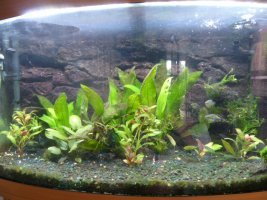Soilwork
Member
- Joined
- 22 Nov 2015
- Messages
- 558
Not by everyone...
Further...
My guess would be that high plant diversity in turn encourages high soil microbial diversity and activity which promotes stability and inhibits algae through increased carbon cycling and reduced organics. Also, I suspect allelopathic algae inhibiting interactions are not just confined to higher plants and algae but also occur between bacteria and algae.
Which kind of brings me full circle back to my pioneer community analogy above...
So in short, maturity can result in high microbial diversity which promotes ecosystem functioning and ecological stability. Which in the case of our planted tanks perhaps doesn't favour algae so much.
But I guess it's all a bit chicken and egg for a while after set up; plant diversity is low, and so is microbial diversity and activity. The system will take a while to reach maturity and homeostasis. In that time algae will often flourish especially when plants are adapting to submersed growth and there is a lot of solid and dissolved organic carbon in the system.
yes I can agree with most of that. Thus my point is that algae tends to be almost a guarantee in new set ups and mostly appear more intense in tanks that favour strong light in conjunction with an additional fertiliser regimen. This is because 90% of tanks have excess organics due to overfeeding and adjusting plants and do little to alleviate high BOD. There seems to be a negative loopback in these kind of tanks. Even adding oxygen to a tank that is running a backlog of organics can severely benefit algae if plant mass is low.
so yes tank maturity is a lot of things rolled in to one but many do not have the patience to wait it out or know the steps required to use as a preventative for algae whilst the tank is maturing.
this brings me back full circle to my point that we are taught the incorrect meaning of balance from outset. We focus too much on plants and that balance extends far beyond light, ferts and co2.





